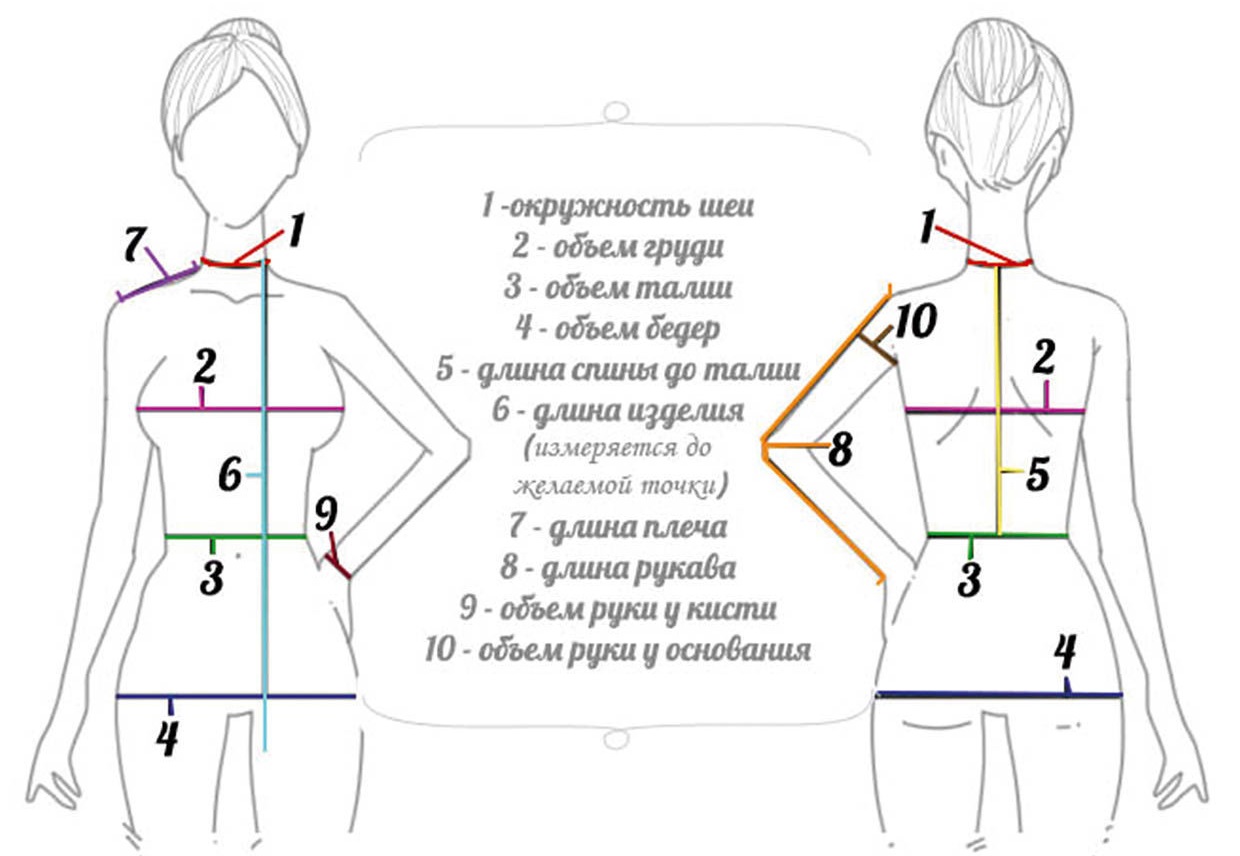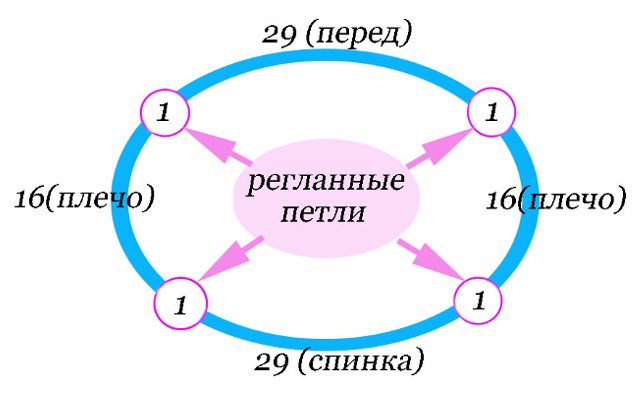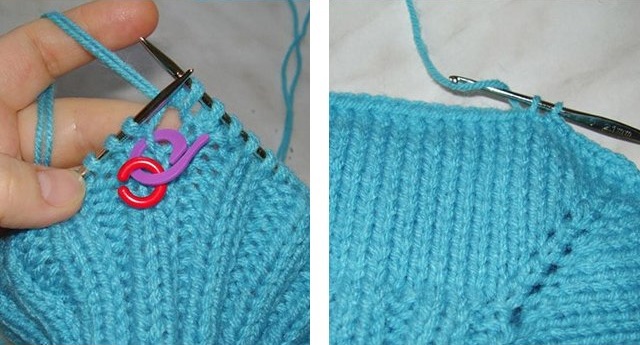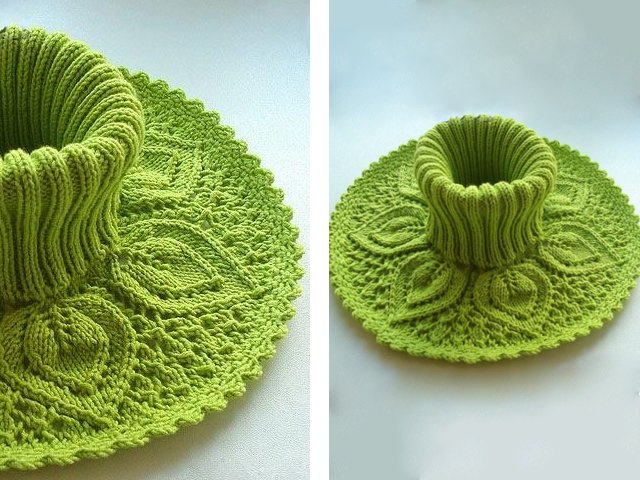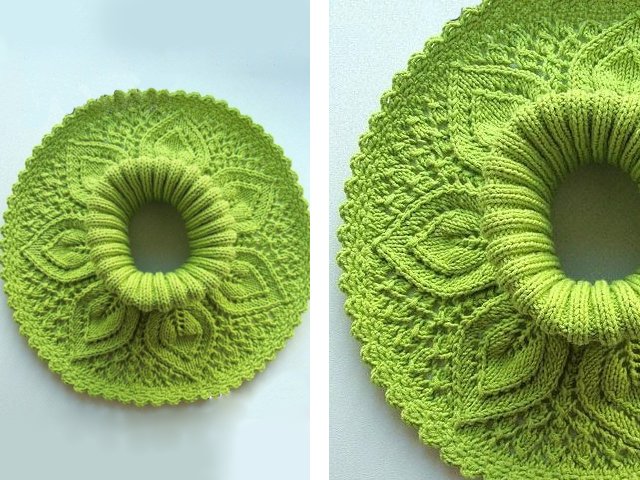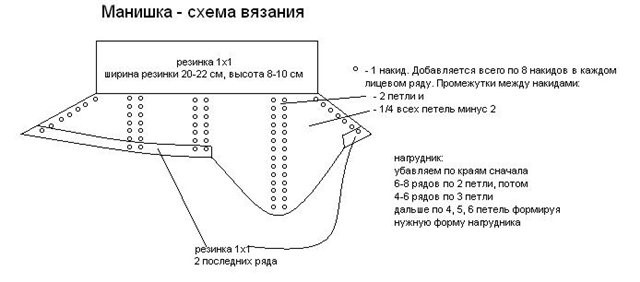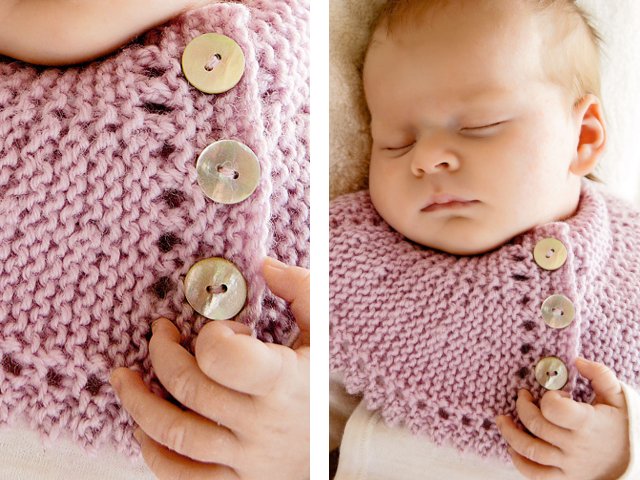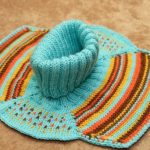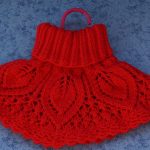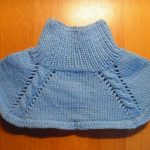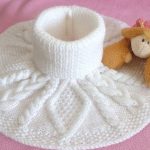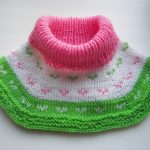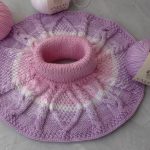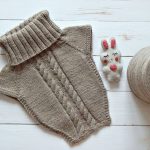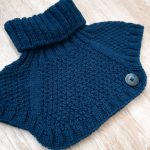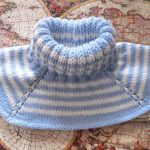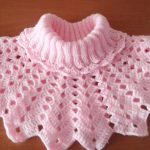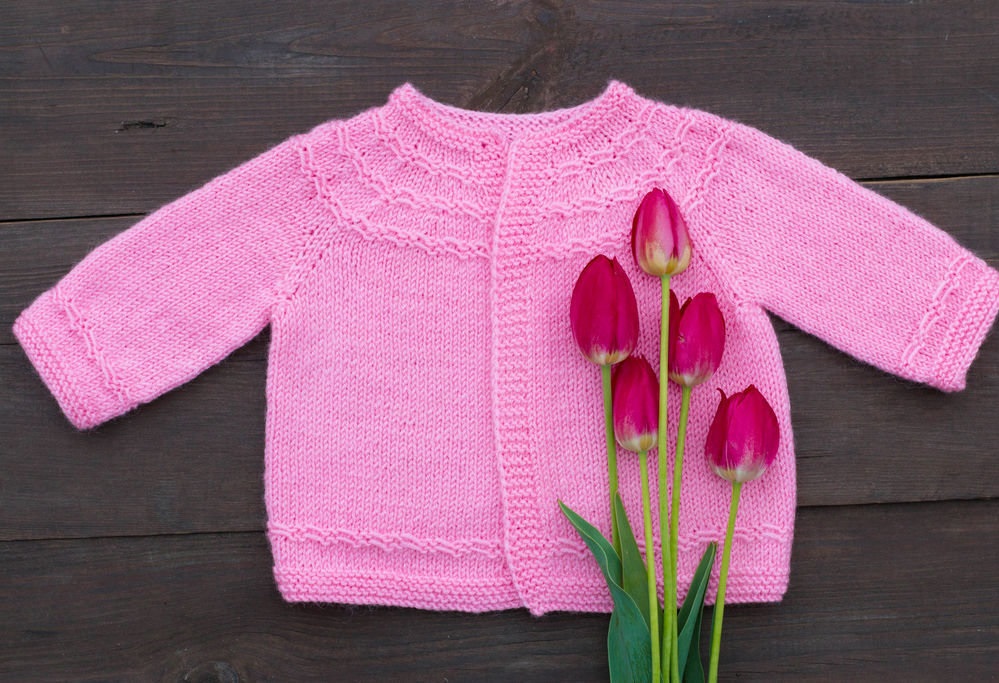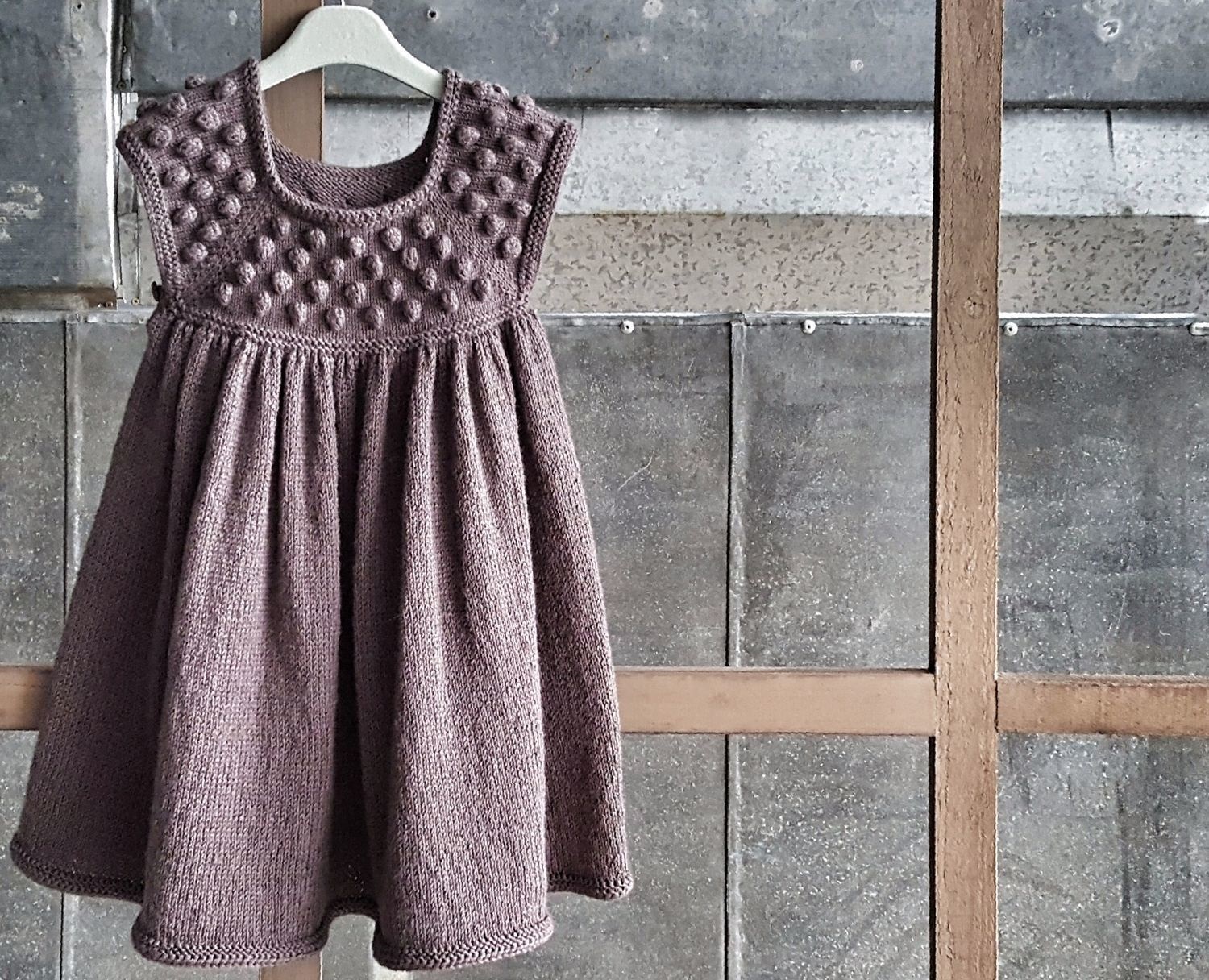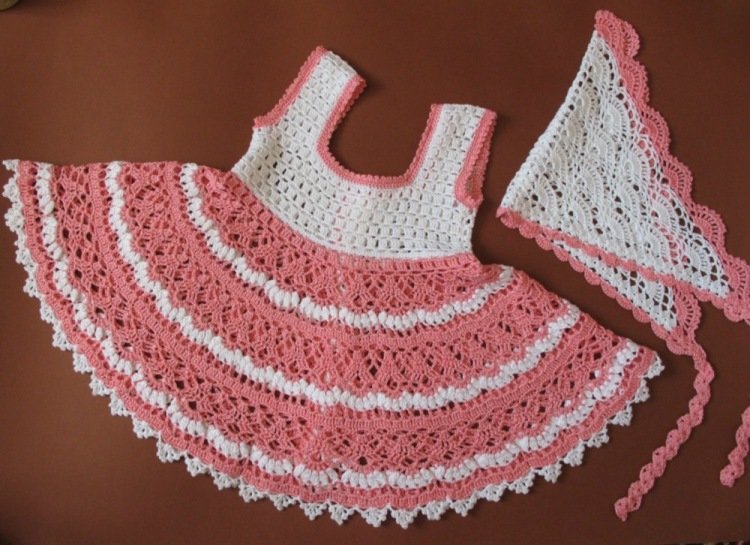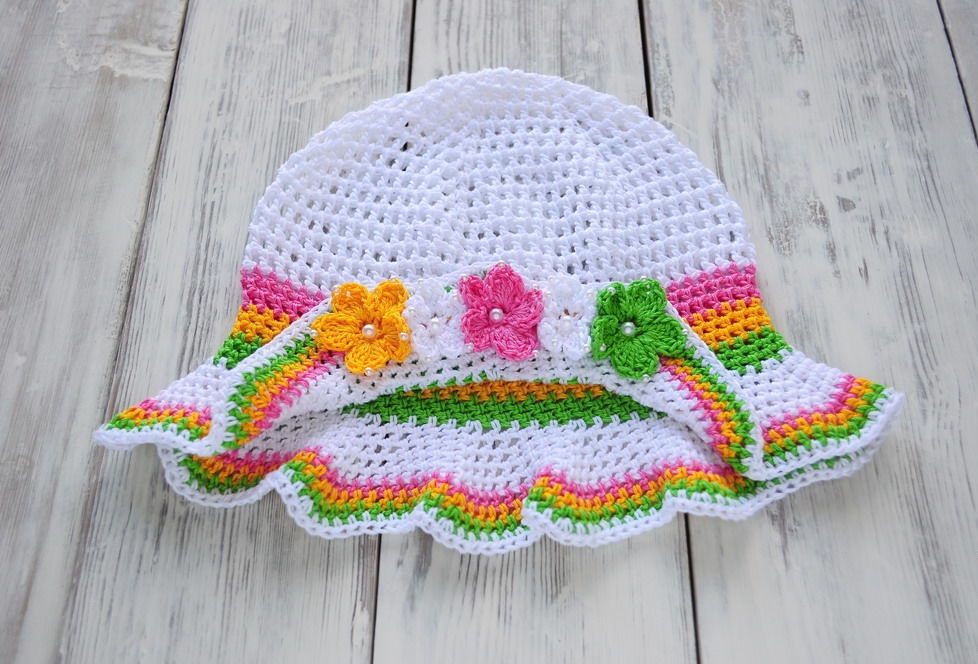A bib is a comfortable and warm item in a child's wardrobe. Not all kids like to wear scarves, and often start taking them off at the first convenient opportunity. For this reason, knitting a bib with knitting needles for children is a good option to protect the child's neck from wind and cold air. Such an item is suitable for children of any age.
The nuances of choosing yarn for a children's accessory
In order for a knitted children's bib to be pleasant on the body and not cause irritation, it is better to take yarn containing acrylic or cotton. Such a thread is very soft in itself and does not cause discomfort. You can also take the option with wool, but then it is better to give preference to alpaca. For children's products, it is advisable to choose thin yarn and knit with several threads: this way the fabric will be denser, and the item will not let in the cold.
For very young children up to one year old, Alize Lanagold 800 yarn is suitable, it is 51% acrylic, it is 100 g per 800 m. You can also use Alize Softi, this thread is 100% polyester. For older children, Alize Naturale or Baby wool are suitable. For less cold seasons, you can take YarnArt Bianca Baby Lux, it is 40% wool, and the rest is premium acrylic.
Often, yarn tags indicate what diameter of knitting needles will fit the yarn. For baby items, it is better to choose a smaller size so that the item is tightly knit. It is worth starting with simple knitting needles and small items, and as you gain experience, move on to circular ones.
Every experienced needlewoman has her own style of work, so the number of needles may not be particularly important for her. Some knit more tightly, some less - it depends on experience and the desired result.
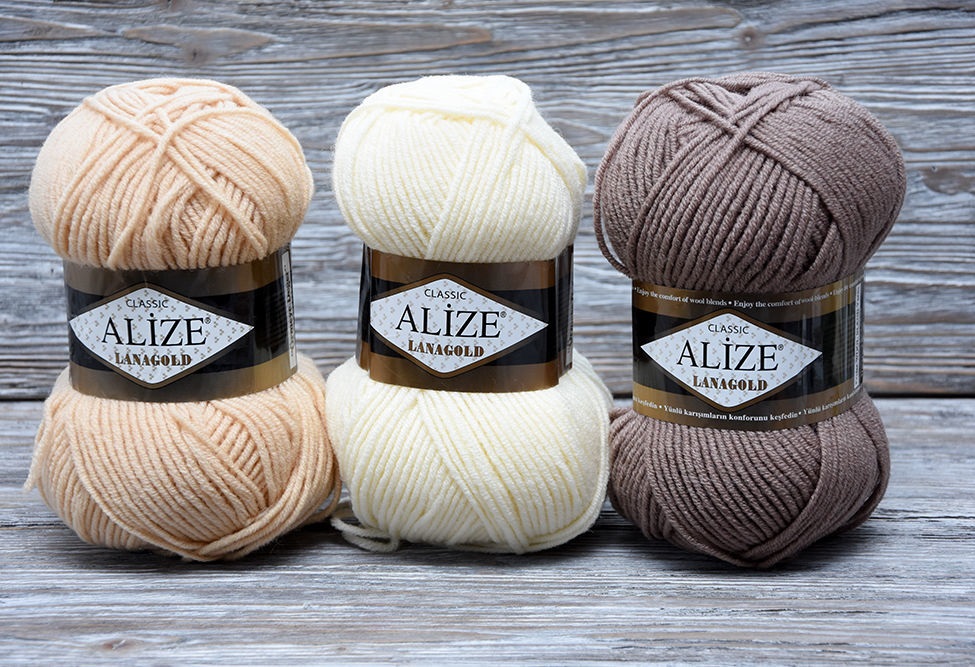

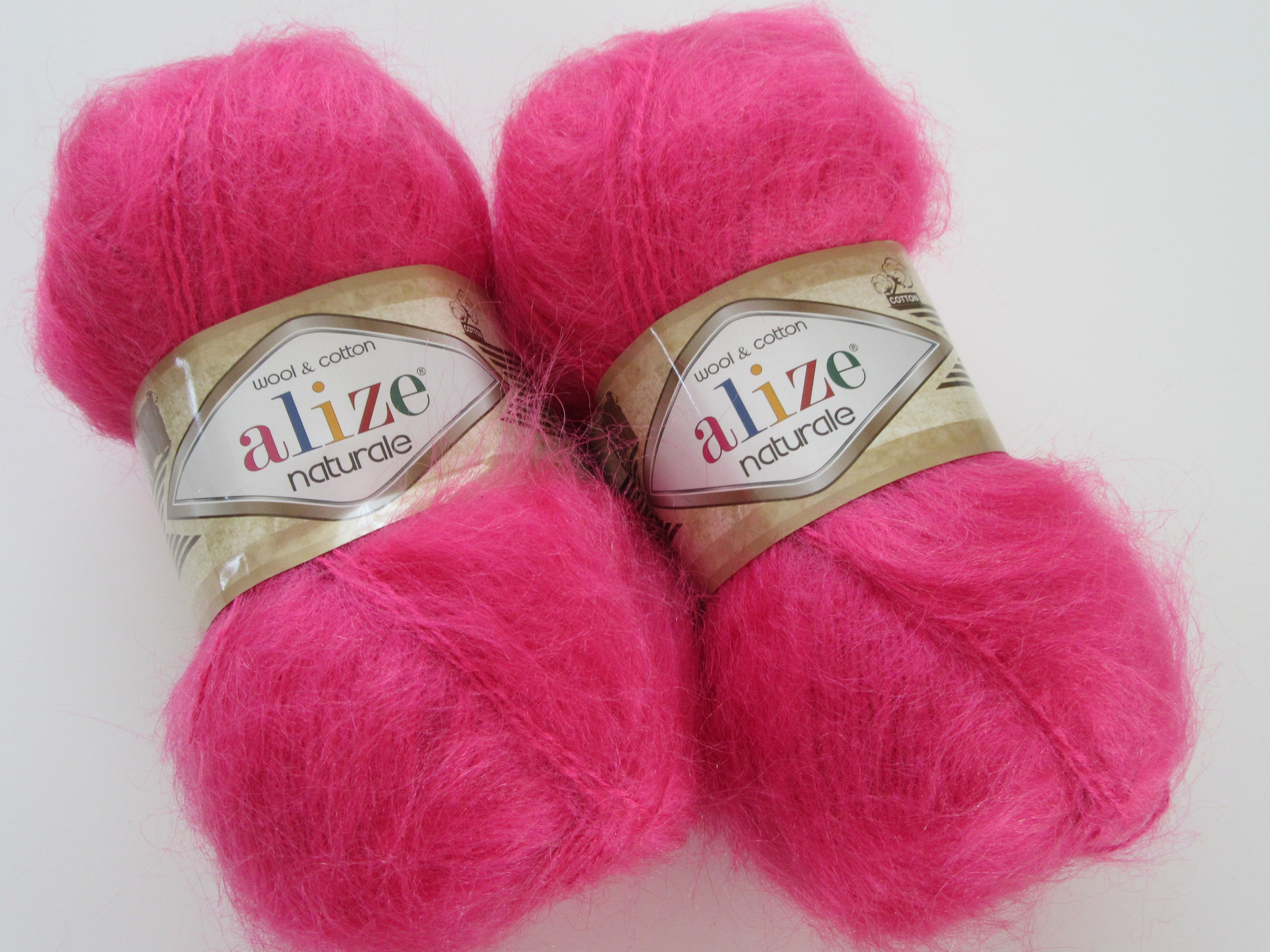
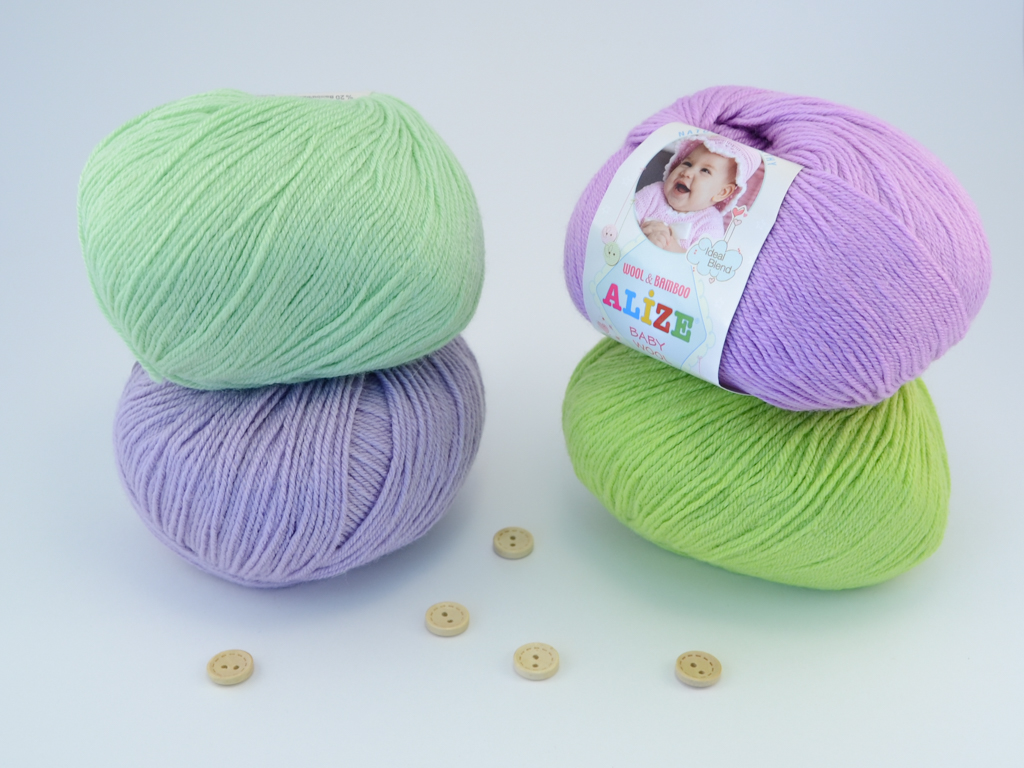
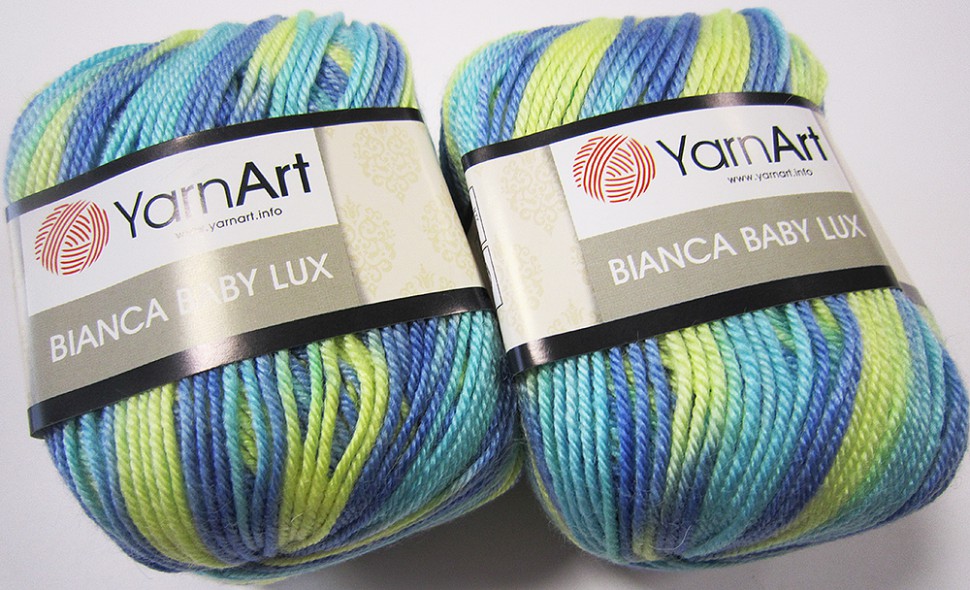
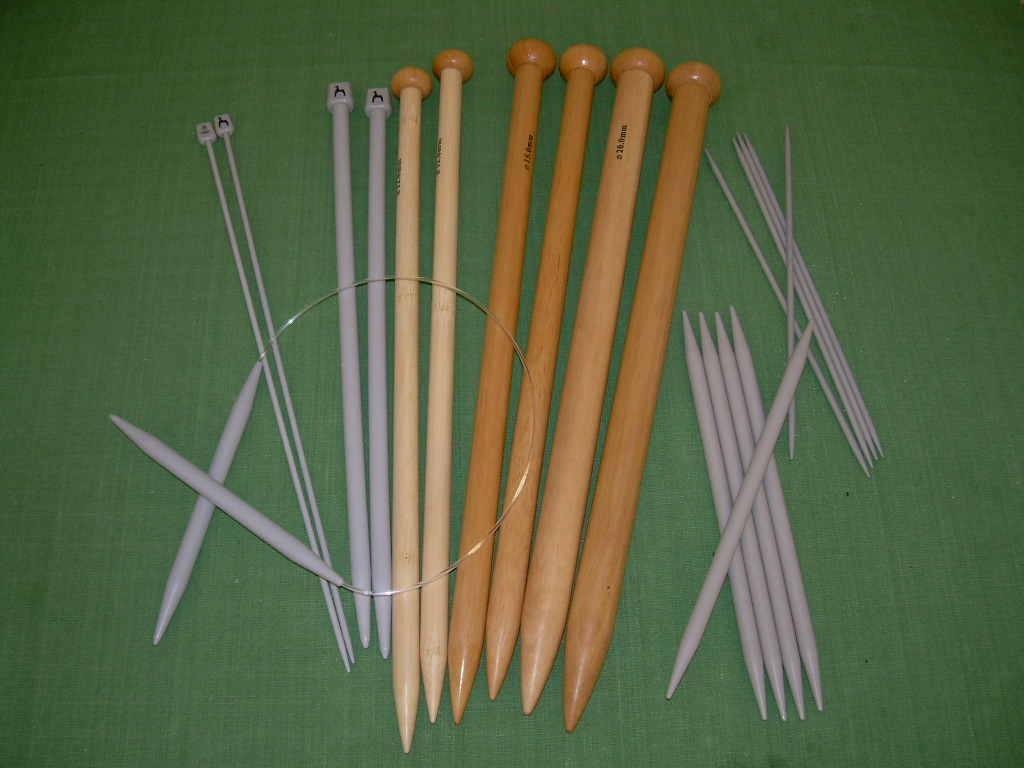
Knitting methods and techniques
There are several techniques and patterns that can be used to knit a collar. They all differ in their level of complexity and execution features. Beginners should give preference to garter stitch or elastic.
| Name of technique, pattern | Peculiarities |
| Stockinette stitch | A simple fabric made from alternating rows of knit and purl stitches. |
| Rubber | The loops are knitted one above the other, alternating, in accordance with the pattern. |
| Garter stitch | Fabric made of only front or back loops. |
| Braids | A three-dimensional pattern that makes the item unique. |
| Openwork knitting | There are several patterns in openwork knitting: leaves, diamonds, braids and cords, lace, flowers, centipede, checkerboard. |
The bib for a boy and a girl do not have any particular patterns; they usually choose different colors. There are some models that are suitable only for one gender. For example, knitting flowers is not typical for things for boys, and cars are not made for girls with knitting needles. Also, braids or any openwork things are not knitted for the male gender - often a regular satin stitch or elastic is chosen. It is undesirable to make something with very voluminous patterns, since folds can create inconvenience for the child.
There are also two ways to make children's bibs: with circular and straight knitting needles. There is no particular difference, but the first ones can be used to make a connecting loop and work without turning the fabric over. This is convenient because the needlewoman will not get confused in the order of the front or back rows.
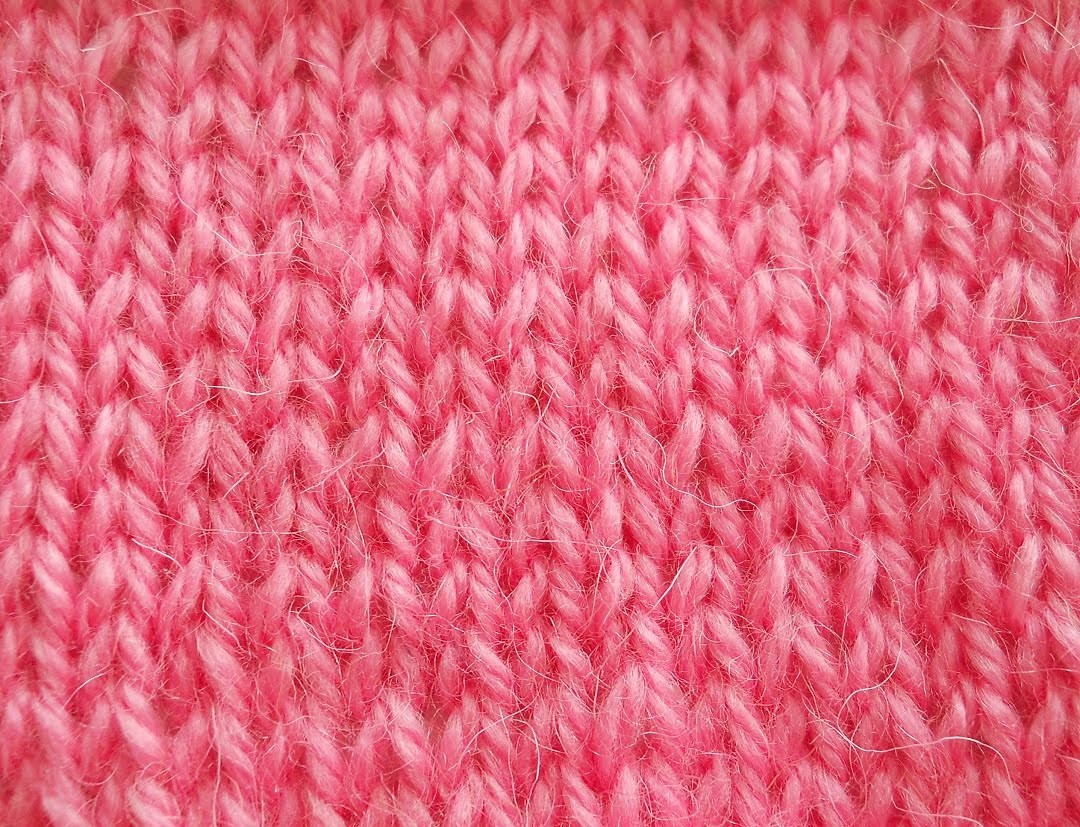

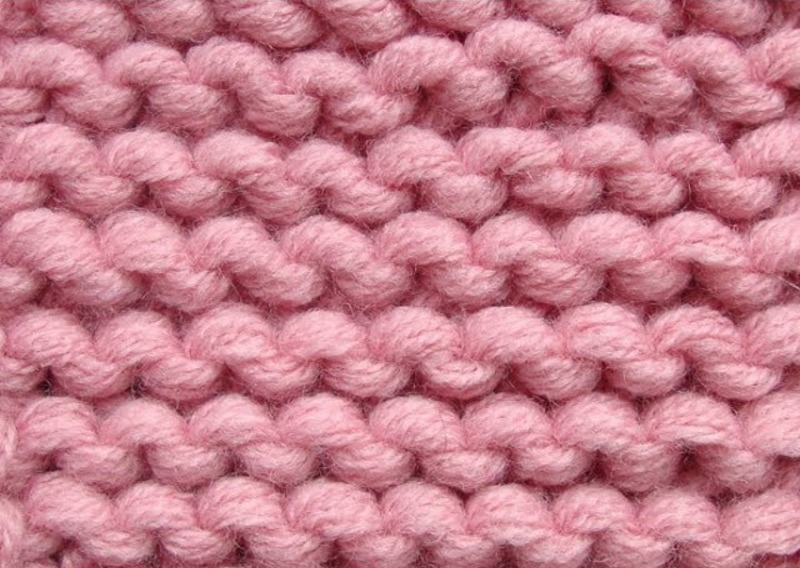
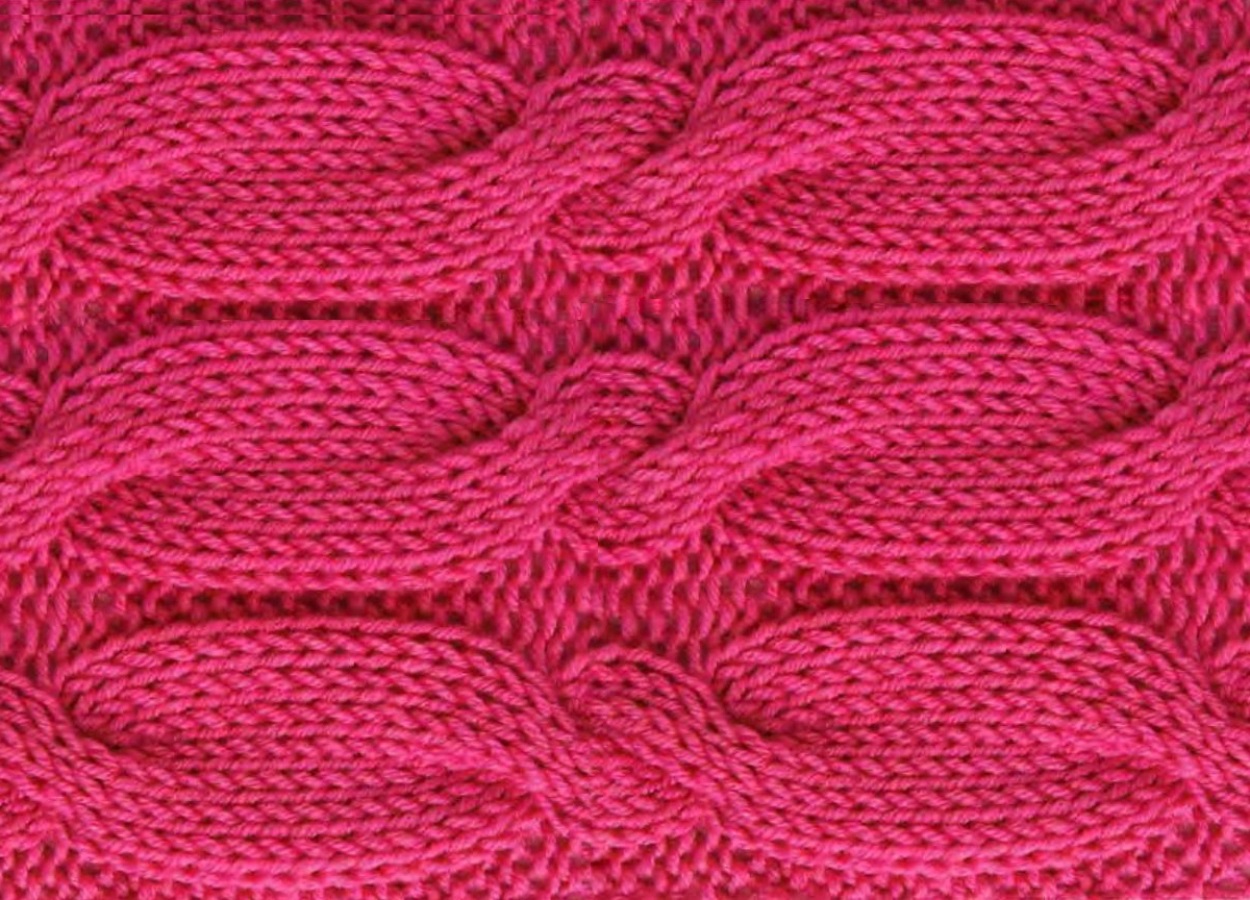
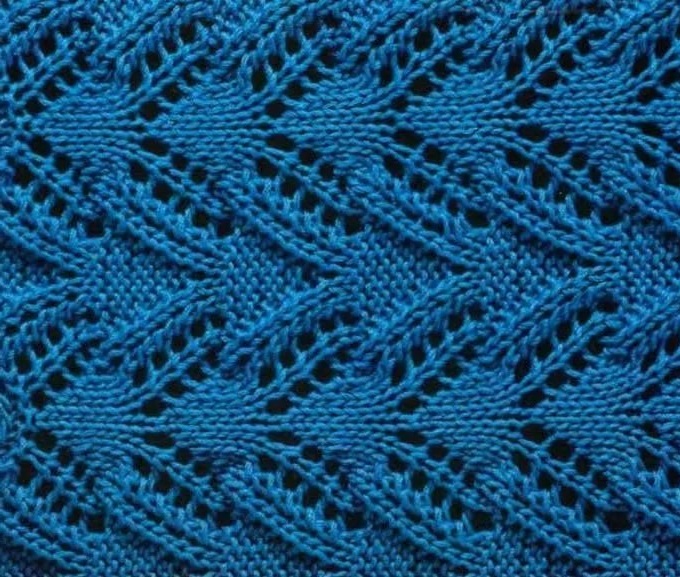
How to take measurements
To make sure the child's bib is comfortable and the right size, you need to take measurements:
- Chest circumference (CG).
- Shoulder length (SL).
- The desired gate height.
- Neck volume.
Since the girl's bib will be worn over other items, it is advisable to add 2-3 cm of allowance.
To calculate the number of loops, you need to make a small sample from the same yarn and pattern that will be used to make the collar. We knit a fabric approximately 20 by 15 cm. After that, we need to count how many rows and columns we got, then divide the numbers by 2. For example, if 60 loops are made, this is approximately 3 in each centimeter. If 20 rows are knitted, then this is one in 1 cm. From these calculations, we can understand how many loops need to be cast on. It is advisable not to knit too tightly, since after washing the product will shrink, and because of this it may be difficult to put on the child.
Stages of knitting popular models
For beginner needlewomen who want to make a collar for a child, there is a step-by-step instruction with diagrams. Each needlewoman chooses the direction in which to knit the product. You can start from the neck and go down, or the opposite, make a wide part and then go up. You can knit a collar with knitting needles in 2-3 hours if you follow the description.
With circular needles
A beginner needlewoman can knit a collar for a child with circular knitting needles if she looks at the instructions with a description of the pattern. These knitting needles are good because you can work on them without turning the product. The diagram and description usually do not cause difficulties if the craftswoman follows all the rules:
- Knit a sample of the collar with a rib: cast on 30 loops and knit 20 rows. From these calculations, calculate how many loops are needed for a full-fledged work.
- Cast on 78 stitches, make a 1 by 1 elastic band to the required height, then knit the raglan part of the collar.
- In the first row, knit 2 purl stitches, 10 knit stitches and continue until the end of the round.
- Next, before the purl stitch, make one yarn over, then 2 purl stitches, another yarn over and 10 knit stitches, continue until you reach the marker that indicates the end of the circle.
- In the next row, you need to make a yarn over, which is knitted with a front loop behind the back wall.
- Then repeat this pattern in a circle until the end of the bib, until it is 24 cm in height.
- At the end of knitting, close the loops and tuck in the threads.
This model is considered the easiest for beginner needlewomen, as it does not have any complex patterns that could cause difficulties. With circular knitting needles, you can make items without seams, which is very important for children's things.
With a pattern
An openwork bib for girls is made from thin yarn in two threads. If you choose an interesting pattern for making such a product for kids, then for the needlewoman this process will only be a pleasure. Knitting an openwork collar with knitting needles for children requires caution, because it is easy to get confused in such patterns. You can often find detailed instructions on how to do things like this:
- First, you need to decide on the yarn. If the collar is for a boy, it is better to take dark threads. For example, this could be yarn containing 70% acrylic and 30% angora. Knitting needles with a diameter of 1.5 to 2 mm are suitable for it.
- First, a number of loops, a multiple of 4, are knitted with double-pointed knitting needles, they are joined into a circle. Then a 2 by 2 elastic band is made, approximately 14 cm long.
- Next, knit one row with front loops, adding loops along the way to get 105.
- Then knit according to the pattern. First row - draw through, 2 knits, 2 together knits, 1 behind the back wall, yarn over and draw through again. In the second row and all subsequent even rows, knit stitches.
- The third row, like all the following ones, begins with a draw through, 2 knits, yarn over, 1 knit behind the back wall, yarn over, 2 knits, 2 together and a double decrease. The fifth is knitted similarly.
- In the seventh, a decrease to the left is required and at the end of the circle a double decrease.
- The ninth row again begins with a draw through and is knitted similarly to the third, except that after the loop behind the back wall there are 4 front loops, and at the end there is a double decrease.
- From rows 11 to 17, you need to draw through, 2 knits, yarn over, draw through, 5 knits (and up to 17 they decrease in odd numbers), 2 stitches together, 2 knits, 2 together, double decrease and yarn over.
- In the 19th row – draw through, 2 knit stitches, yarn over, double decrease, 2 knit stitches, 2 together, yarn over, 3 knit stitches, 1 knit stitch behind the back wall, yarn over, 3 knit stitches and yarn over again.
- In the last row there is a double decrease, yarn over, three knit stitches, yarn over, 1 knit stitch behind the back wall, yarn over and so on until the end of the row.
The whole pattern is repeated to the end of the row. After knitting the last loops, you need to close them and then connect them with a knot. It is important to hide all the threads, wash or steam the product. Only an experienced craftswoman can knit a children's bib using this pattern, since there are many complex elements here.
Detachable collar with button
The bib with a detachable collar is made with buttons, which allows you to easily put the item on your child. This model can be made for boys up to one year old. A detailed description of how to make the model can be found in the public domain:
- According to the child's measurements, you need to cast on the desired number of loops onto the knitting needles.
- Next, knit a 1 x 1 elastic band to the desired size.
- When knitting, it is necessary to take into account the distance from the shoulder to the child's shoulders so that the bib does not ride up.
- The bottom part can be done in garter stitch.
When knitting a detachable collar with buttons, it is necessary to choose soft yarn so that there is no discomfort for the baby.
When finished, the product needs to be steamed. Decorate with knitting or stripes if desired. Decorating children's things with thermal appliques looks beautiful. A collar for a boy knitted using this technique will serve the baby for a long time.
Video


